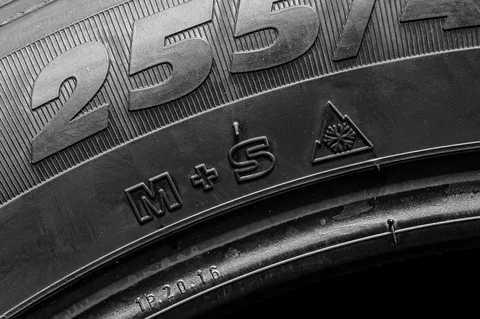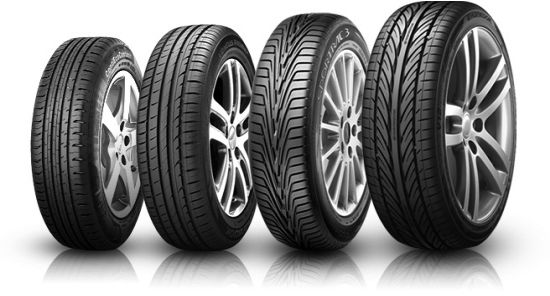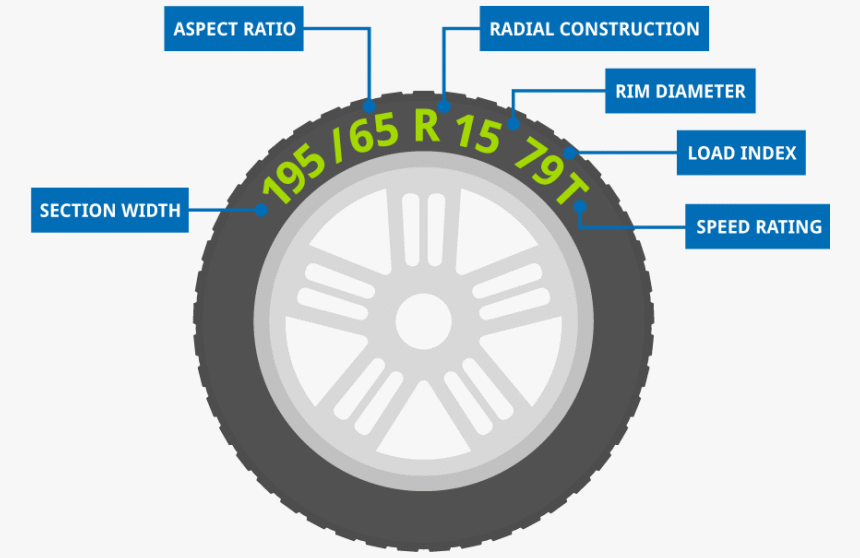Tyre Codes: What Those Numbers and Letters on Your Tyres Really Mean
Have you ever looked closely at your car’s tyres and noticed a strange combination of numbers and letters like 245/45 R18 96Y and wondered what they mean?
You’re not alone. Most drivers in Dubai and across the UAE see these markings daily but rarely know their purpose.
Here’s the secret: those tiny codes hold vital information about your tyre’s size, speed rating, load capacity, and even its manufacturing date. In other words, they help ensure your car’s safety and performance especially on the UAE’s fast highways and hot roads.
So, if you’ve ever thought “What do tyre numbers represent?” this guide breaks down every detail in plain English.
What Are Tyre Codes and Why Do They Matter?
Tyre codes are standardized identification marks set by international tyre organizations.
Each section of the code tells you something different like how wide your tyre is, how tall the sidewall stands, and how fast or heavy it can safely go.
Think of tyre codes as your car’s “shoe size.” The right fit keeps you comfortable, improves control, and boosts fuel efficiency. The wrong fit can reduce grip, increase wear, or even cause damage at high speeds.
For luxury or performance cars like the ones in the Drive UAE fleet, choosing the right tyre is especially important. Even a small mismatch can affect acceleration, handling, and braking precision.
Breaking Down the Tyre Code Example: 245/45 R18 96Y
Let’s decode this one.
1. Tyre Width (245)
The first number, 245, represents the tyre’s width in millimetres, from one sidewall to the other.
Wider tyres offer better grip and stability, perfect for high-performance cars like McLaren or Lamborghini.
Narrower tyres improve fuel efficiency and comfort for everyday city driving.
2. Aspect Ratio (45)
The second number, 45, refers to the tyre’s aspect ratio, the sidewall height as a percentage of the tyre’s width.
A lower ratio (like 35 or 40) means a thinner sidewall and sportier look, ideal for fast cars.
A higher ratio (like 60 or 65) provides a smoother ride and better cushioning, perfect for SUVs and sedans.
For example, if your tyre reads 45, that means the sidewall height is 45% of the tyre’s 245mm width.
3. Construction Type (R)
The letter R stands for Radial construction.
Nearly all modern tyres are radial, which means their internal layers run radially across the tyre.
This design provides more comfort, longer lifespan, and better control compared to old bias-ply tyres.
4. Wheel Diameter (18)
This number indicates the wheel’s diameter in inches. So, a tyre with 18 fits a rim that’s 18 inches wide.
Larger wheels offer sharper handling and sportier looks, but smaller ones usually deliver a more comfortable ride.
5. Load Index (96)
The load index shows how much weight each tyre can safely carry.
In this case, 96 means each tyre can support up to 710 kilograms.
It’s essential to match the load index with your vehicle’s specifications, especially for SUVs or cars that carry heavy loads.
For an official reference, check the Bridgestone load index chart or your car’s owner manual.
6. Speed Rating (Y)
Finally, the Y indicates the maximum speed capability.
Here’s a quick guide:
- H = up to 210 km/h
- V = up to 240 km/h
- W = up to 270 km/h
- Y = up to 300 km/h
That means tyres with a Y rating are built for high-speed vehicles like your favorite supercars.

Other Important Markings You’ll Find on Tyres
Besides the main code, tyres have additional markings that provide valuable information about quality, safety, and age.
Manufacturing Date (DOT Code)
Look for a four-digit number following the word “DOT.”
Example: DOT 2423 means the tyre was made in the 24th week of 2023.
Even if your tyres look new, you should replace them every five years because rubber degrades over time especially under Dubai’s heat.
Treadwear, Traction & Temperature Grades
These are performance indicators set by manufacturers:
- Treadwear: Durability rating (higher = longer life).
- Traction: Grip on wet roads (rated from AA to C).
- Temperature: Heat resistance (A to C).
In the UAE, always look for tyres with an A-grade temperature rating to handle extreme conditions safely.
M+S and 3PMSF Symbols
Here is what you need to know.
M+S (Mud and Snow): Indicates mild all-season capability.
3PMSF (Three-Peak Mountain Snowflake): Certified for snowy conditions.
While these aren’t commonly needed in Dubai, they’re useful if you travel to colder climates.

Choosing the Right Tyres for Dubai Roads
Dubai’s road conditions are unique, smooth highways, high speeds, and scorching heat.
That’s why tyre selection here isn’t just about performance; it’s about safety and temperature tolerance.
Here’s what to keep in mind:
- Always check your vehicle’s manual for recommended size and load index.
- Choose tyres rated for high temperatures.
- Maintain correct tyre pressure (check monthly).
- Replace tyres that are over five years old even if the tread looks fine.
If you rent from Drive UAE, every vehicle already comes fitted with premium tyres approved for UAE driving conditions.

Common Mistakes Drivers Make When Reading Tyre Codes
Many drivers misunderstand or overlook tyre codes completely. Here are a few mistakes to avoid:
- Ignoring load and speed ratings: This can lead to tyre blowouts at high speeds.
- Mixing tyre sizes: Different front and rear sizes can upset balance unless specified by the manufacturer.
- Skipping the manufacturing date: Old tyres harden over time and lose grip.
- Choosing style over safety: Fancy tread patterns aren’t always the right fit for your vehicle type.
Pro Tips for Tyre Maintenance and Longevity
A few small habits can help your tyres last longer and perform better:
- Check pressure regularly: Use a gauge when tyres are cold.
- Rotate every 10,000 km: Helps even out wear.
- Inspect for cracks or bulges: Especially after long road trips.
- Store spares properly: Keep them in a cool, shaded place.

Conclusion
Every tyre tells a story if you know how to read it.
Those numbers and letters are more than random, they’re your roadmap to safety, performance, and efficiency on the road.
So next time you glance at your tyres, you’ll know exactly what 245/45 R18 96Y stands for, and why it matters every time you hit the accelerator.
And if you’d rather leave the details to experts? Explore Drive UAE’s luxury fleet, where every car is fitted with premium, safety-tested tyres built for Dubai’s roads and your next thrilling drive.

